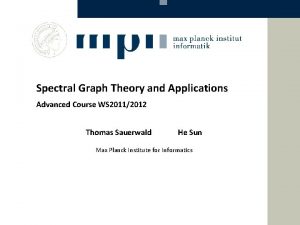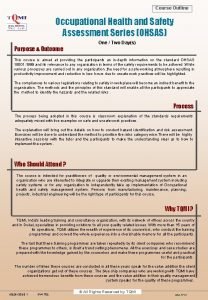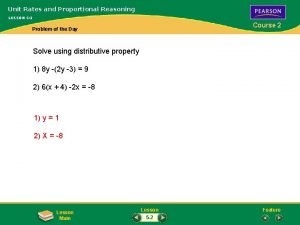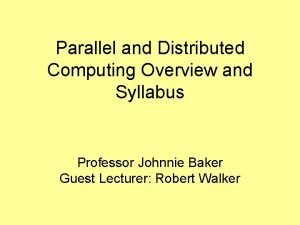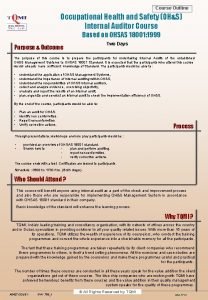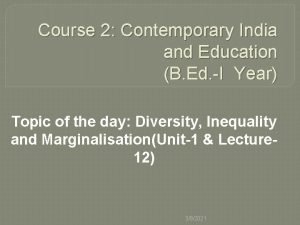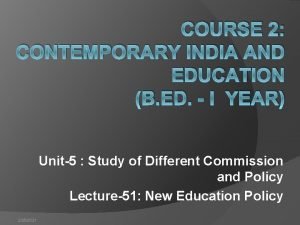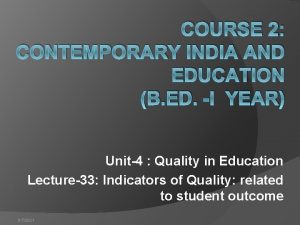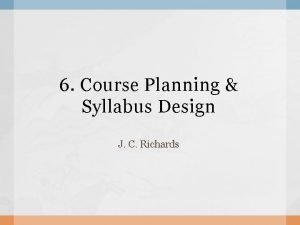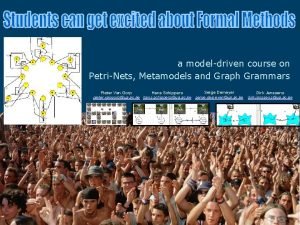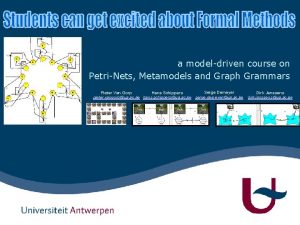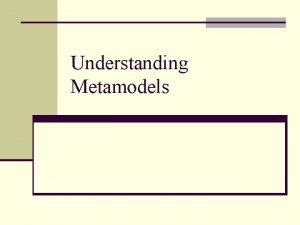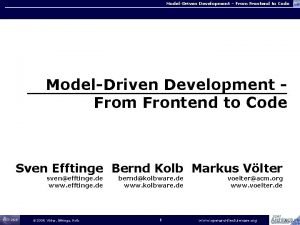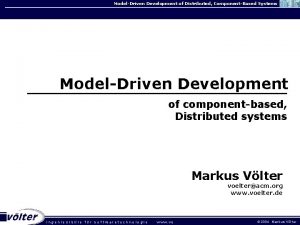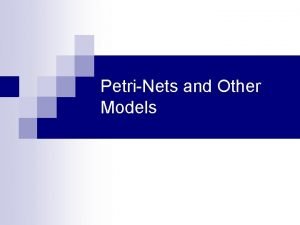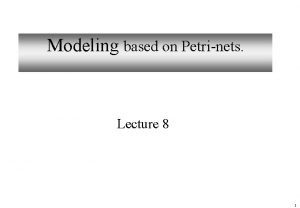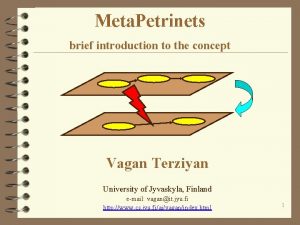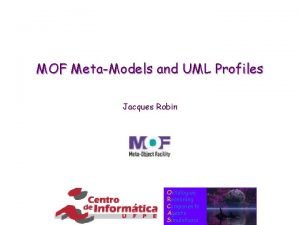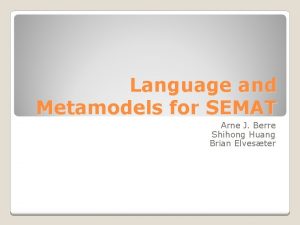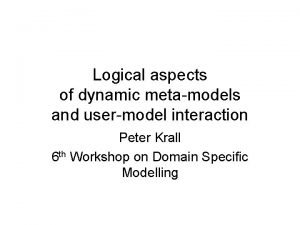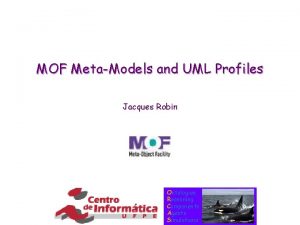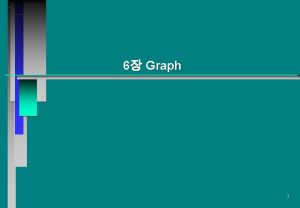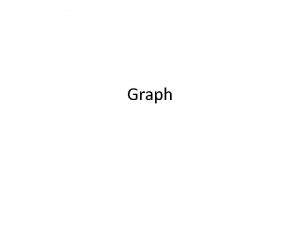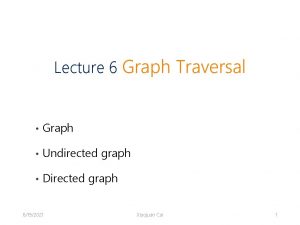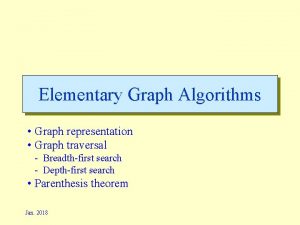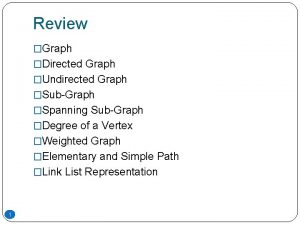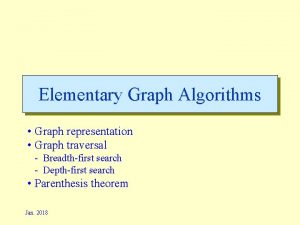a modeldriven course on PetriNets Metamodels and Graph























- Slides: 23

a model-driven course on Petri-Nets, Metamodels and Graph Grammars Serge Demeyer Pieter Van Gorp Hans Schippers pieter. vangorp@ua. ac. be hans. schippers@ua. ac. be serge. demeyer@ua. ac. be Dirk Janssens dirk. janssens@ua. ac. be

2 Myth of Formal Methods: • exhaustive proofs • high training required • hard to comprehend • expensive • . . .

3 Solution • Prevent spread of such myths into Industry • Variety of Courses apply Formal Modeling - designing a distributed system: introduction to UML, designing a compiler: advanced class diagrams, text grammars, relational algebra, B, Z, OCL, Hoare Logic, . . . • However: - always limited to one modeling language / formalism no link between: • “mathematical” languages • more human-friendly languages • source code - students: formal methods not applicable in practical software engineering? • Therefore: - New Model-Driven Engineering (MDE) Course Software Development with Various Formalisms Metamodeling and Model Transformation

4 1. Designing the Course • • Objectives Tool Selection 2. Course Description • Teaching Methods • Evaluation Methods • Course Artifacts • Link to Objectives 3. Lessons Learned

5 Designing the Course >> Objectives / Expected Learning Outcomes • “Based on formal specifications (logical specifications, statecharts, Petri-Nets) the student should be able to build models expressing the intended functionality of a system, to analyse and to verify these models, and to generate a working implementation from them. ” • “The student should be able to express the intended functionality Transformations of a(Meta-) system from different Properties viewpoints in different formalisms Modeling. Graph Grammars) and ensure particular properties (Petri-Nets, (boundedness, consistency, . . . ) of such models. The student should use state-of-the-art transformation techniques (model animation, model translation and code generation) to integrate distinct models and relate them to a complete implementation. The student should experiment with metamodelling in this context, and acquire an understanding of the benefits and limitations of the 4 -layer meta-data architecture. ” khj

6 Designing the Course >> Tool Selection • Dia. Meta - advantage: standard (MOF) compliant - interoperable with group's research tool - disadvantage: immature • Tiger - advantage: “sexy” (Eclipse) - disadvantage: heavyweight, yet no MOF/EMF support (yet) • ATo. M 3 - advantages: self-containedness - disadvantage: non-standard

7 1. Designing the Course • • Objectives Tool Selection 2. Course Description • Teaching Methods • Evaluation Methods • Course Artifacts • Link to Objectives 3. Lessons Learned

8 Course Description >> Teaching Methods 7 x 11 x

9 Course Description >> Evaluation • • Black. Board Assignments: 8 Relaxed Deadlines - • E-mail sumissions Incremental Assignments - • • • Prepared Solutions Assignment completion overview Three Evaluation Milestones Extra Examination: - Oral with written preparation

10 1. Designing the Course • • Objectives Tool Selection 2. Course Description • Teaching Methods • Evaluation Methods • Course Artifacts • Link to Objectives 3. Lessons Learned

11 Course Artifacts >> Petri-Net Editor (I/II) Ph. 5: on Forks on Table Ph. 3: Forks Table Ph. 3: Could eat too thinking 1 &on 5 Forks will start Ph. All 4: Ph. Forks Table Ph. on eating Table Ph. 2: Ph. Forks 1: Forks on 6: Table on Table . . . Ph. 4: Cannot start eating! . . .

12 Course Artifacts >> Petri-Net Editor (II/II) Modeling a Visual Language Editor Modeling Language Structure (= metamodel) >> as E/R or Class Diagram Modeling Concrete Syntax Some Python code required

13 Course Artifacts >> Rail. Road Editor Animation changes train location . .

Graph Grammars (I/II) 14

Graph Grammars (II/II) Train Animation: rewriting of abstract nodes Train 2 Petri Translation: Out-Place Mto. N rules Train 2 Petri Transl. : Traceability 15

16 1. Designing the Course • • Objectives Tool Selection 2. Course Description • Teaching Methods • Evaluation Methods • Course Artifacts • Link to Objectives 3. Lessons Learned

17 Course Description >> Content<>Objectives Modeling Properties Transformation Introduction Papers, Discussion, Motivating Demo’s C/E Nets P/T Nets Colored Nets Safety Deadlocks? PN Metamodel Train Metamodel Next step: tracing back analysis results PN Models Train Models Discussion: Evaluation ATo. M 3 GGs Generating Editors PN Animation Train-to-PN Classification Papers “Beyond ATo. M 3”

18 1. Designing the Course • • Objectives Tool Selection 2. Course Description • Teaching Methods • Course Artifacts • Evaluation Methods • Link to Objectives 3. Lessons Learned

19 Lessons Learned >> Best Practices • Best Practices - Feasibility Study Expert Supervision Start Small Work Incrementally Illustrate Applicability Examples First Problems First

20 Lessons Learned >> Planned Improvements • Planned Improvements - Provide Tool Feedback - Consider Alternative Tools - Provide Integration Components • to Petri-Net Analysis Tools - Extend Railroad Case Study - Prepare Follow-Up Courses

21 Lessons Learned >> Industrial Relevance • Industrial Relevance - Curriculum at University of Antwerp: • 3 Master Profiles: - industrial, - educational, - or research profile. • Course in BACH 3 tradeoff! - Concrete alternatives: (a) Use of UML code generator (transformations) in popular middleware context (b) Building editors and transformations without middleware focus - Why (b)? • tool internals look beyond marketing! • demand from automotive industry

22 Conclusions • Course Format » Conventional Lectures: Petri-Nets » Paper Discussions: MDE » ATo. M 3 Lab Sessions Integrated Case Study, Problems First • Course Focus » Integration of Languages • Course Evaluation » Content meets Objectives » Black. Board Questionnaire: Students Excited! » Encouraging basis for other new MDE courses

23 Thanks for your Attention Questions? pieter. vangorp@ua. ac. be http: //www. fots. ua. ac. be/~pvgorp/research/ http: //www. pietervangorp. com/
 Course title and course number
Course title and course number Building with bricks
Building with bricks Course interne course externe
Course interne course externe Wait-for graph
Wait-for graph Spectral graph theory applications
Spectral graph theory applications Bridge graph
Bridge graph Networks and graphs circuits paths and graph structures
Networks and graphs circuits paths and graph structures Weights and measure training
Weights and measure training Holder and holder in due course difference
Holder and holder in due course difference Prc-137 hf radio
Prc-137 hf radio Holder in due course example
Holder in due course example Which is a holder in due course?
Which is a holder in due course? Occupational health and safety course outline
Occupational health and safety course outline Ap world history course and exam description
Ap world history course and exam description Course 2 chapter 1 ratios and proportional reasoning
Course 2 chapter 1 ratios and proportional reasoning Parallel and distributed computing course outline
Parallel and distributed computing course outline Ptit safe driving and awareness course
Ptit safe driving and awareness course Occupational health and safety course outline
Occupational health and safety course outline Course 2 contemporary india and education
Course 2 contemporary india and education Course 2 contemporary india and education
Course 2 contemporary india and education Course 2 contemporary india and education
Course 2 contemporary india and education Content based syllabus example
Content based syllabus example Weathr today
Weathr today Temperate climate zone plants
Temperate climate zone plants




